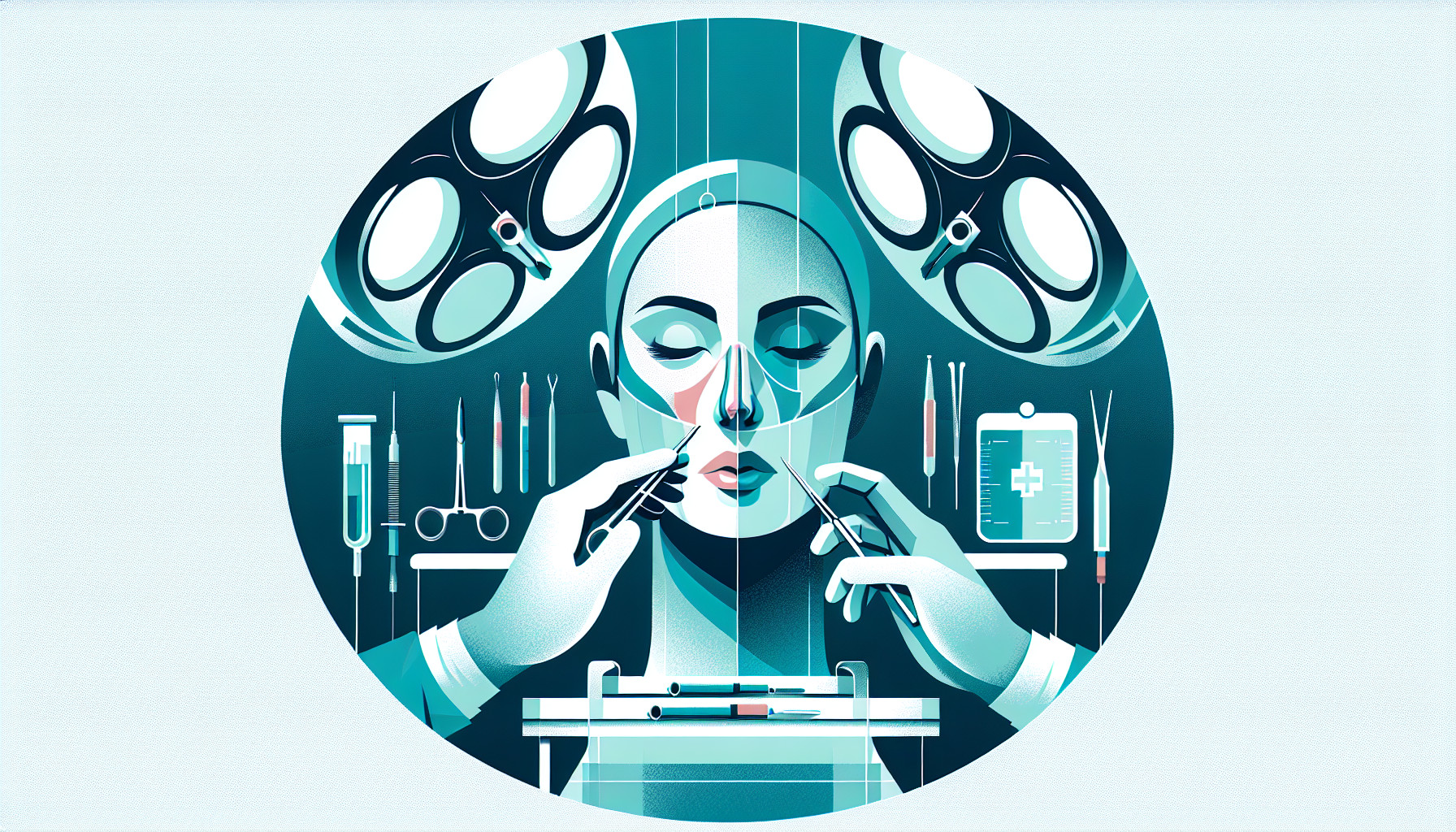Our Summary
This research paper talks about the complications that can arise from cosmetic nose surgeries (rhinoplasties). One of the common issues is problems with the septal graft, the part of the nose that separates the two nostrils. Surgeons need to be aware of this because it might mean the patient will need more surgeries to correct the problem. The paper discusses a case where a patient had to have several surgeries due to ongoing complications. It also looks at past cases and risk factors related to cosmetic nose surgeries.
FAQs
- What are some common complications that can occur after cosmetic rhinoplasty?
- What is a septal graft difficulty in the context of rhinoplasty?
- Why might someone require multiple revision surgeries after a cosmetic rhinoplasty?
Doctor’s Tip
A helpful tip a doctor might tell a patient considering rhinoplasty is to carefully choose a skilled and experienced surgeon who specializes in rhinoplasty procedures. It is important to have realistic expectations and to communicate openly with your surgeon about your desired outcome. Additionally, following post-operative care instructions and attending all follow-up appointments is crucial for a successful recovery and optimal results.
Suitable For
Patients who are typically recommended for rhinoplasty are those who are unhappy with the appearance of their nose and wish to improve its shape, size, or overall symmetry. Common reasons for seeking rhinoplasty include a nasal hump, a drooping tip, a crooked nose, or breathing difficulties due to structural issues such as a deviated septum.
However, it is important to note that rhinoplasty is a complex surgical procedure that carries risks and potential complications. Patients should be in good overall health, have realistic expectations for the outcome of the surgery, and be willing to follow post-operative care instructions closely.
Patients who have already undergone one or more rhinoplasty surgeries and are experiencing complications or unsatisfactory results may also be recommended for revision rhinoplasty. These patients may require corrective surgery to address issues such as septal graft difficulties, asymmetry, scarring, or functional problems with breathing.
Ultimately, the decision to undergo rhinoplasty should be made after a thorough consultation with a qualified plastic surgeon who can assess the patient’s individual needs and goals, as well as discuss the potential risks and benefits of the procedure.
Timeline
Before rhinoplasty:
- Consultation: The patient meets with a plastic surgeon to discuss their goals and expectations for the procedure.
- Pre-operative assessment: The surgeon evaluates the patient’s nasal structure, skin thickness, and overall health to determine if they are a good candidate for rhinoplasty.
- Pre-operative instructions: The patient receives instructions on how to prepare for surgery, including avoiding certain medications and foods.
- Surgery: The rhinoplasty procedure is performed under general anesthesia, during which the surgeon reshapes the nasal structure to achieve the desired outcome.
After rhinoplasty:
- Recovery: The patient experiences swelling, bruising, and discomfort in the days following surgery.
- Follow-up appointments: The patient returns to the surgeon for post-operative check-ups to monitor healing and address any concerns.
- Results: Over time, the swelling subsides, and the final results of the rhinoplasty become apparent.
- Potential complications: In some cases, complications such as infection, bleeding, or asymmetry may arise, requiring additional surgeries or treatments.
- Revision surgery: If the patient is unhappy with the results or experiences complications, they may undergo revision rhinoplasty to correct any issues.
What to Ask Your Doctor
- What are the potential risks and complications associated with rhinoplasty?
- How many rhinoplasty procedures have you performed, and what is your experience with revision surgeries?
- Can you show me before and after photos of previous rhinoplasty patients?
- What specific techniques do you plan to use for my rhinoplasty procedure?
- What is the expected recovery time and post-operative care plan?
- How long will the results of the rhinoplasty last?
- What should I do if I am not satisfied with the results of the rhinoplasty?
- What are the costs associated with the rhinoplasty procedure, including any potential revision surgeries?
- Are there any lifestyle changes or restrictions I should follow before or after the rhinoplasty?
- What is your policy on follow-up appointments and post-operative care?
Reference
Authors: Raskin J, Borrelli M, Nasrollahi T, Chen H. Journal: Ear Nose Throat J. 2022 Dec;101(10_suppl):23S-25S. doi: 10.1177/01455613221123826. Epub 2022 Aug 27. PMID: 36036419
